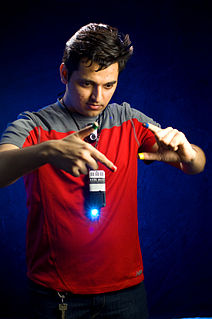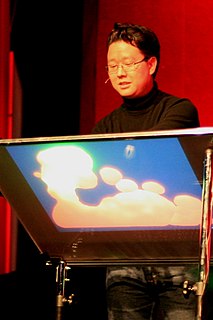A Quote by Seth Shostak
The longtime standard for American TV was 525 lines from top to bottom of the image. As a practical matter, that was roughly equivalent to 350 thousand pixels - pretty crude, given that photos made with your iPhone boast five million pixels.
Related Quotes
I think it's fine that there are five million people who are watching [politics on TV], and obviously I'm happy they are since they're on the air, and there are a couple hundred thousand people reading The Weekly Standard online, and that's great too, but most Americans aren't engaged that intensely, and are much less partisan.
The biggest surprise watching video on the tiny, 2.5-inch screen (320 by 240 pixels) is completely immersive. Three unexpected factors are at work. First, the picture itself is sharp and vivid, with crisp action that never smears the screen is noticeably brighter than on previous iPods. Second, because the audio is piped directly into your ear sockets, it has much higher fidelity and presence than most peoples TV sets. Finally, remember that a 2.5-inch screen a foot from your face fills as much of your vision as a much larger screen thats across the room.




































